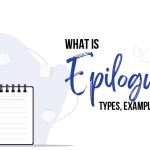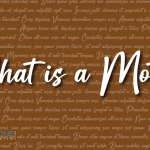When it comes to writing and speaking, parallelism is a literary device that involves the repetition of similar grammatical structures. This repetition can influence the structure of sentences, but it can also have an impact on the meaning and ideas being conveyed. What is parallelism? As a figure of speech, parallelism goes beyond just a grammatical technique and can include the repetition of a word or phrase for emphasis.
Additionally, it can be used to create a parallel relationship between opposing ideas, using grammatical elements to emphasize contrast.
Read: Here’s a list of Top 10 Most Popular Historical Fiction Books of all time.
Parallelism can be used in many different forms of writing, from poetry and speeches to fiction and non-fiction. It is a powerful tool for emphasizing ideas and creating a sense of rhythm and flow in the language.
For example, in the sentence “He was tall, dark and handsome,” the adjectives “tall,” “dark,” and “handsome” are parallel in structure, creating a sense of balance and symmetry.
Here are some examples from different literary work that will help you understand Parallelism a bit better:
- “It was the best of times, it was the worst of times.” – Charles Dickens, A Tale of Two Cities
This phrase uses the parallel structure of “It was the [adjective] of times, it was the [adjective] of times” to create a sense of balance and contrast. The repetition of “it was” at the beginning of each clause emphasizes the idea that the two times referred to are happening simultaneously, and the use of “the best” and “the worst” creates a stark contrast between the two. This parallelism serves to convey the idea that the novel is set in a time of great turmoil and change, where good and bad are closely intertwined and difficult to distinguish. It also sets the tone for the novel and its exploration of the duality of human nature. - “He was my North, my South, my East and West, my working week and my Sunday rest.” – W.H. Auden, “Stop All the Clocks”
This phrase uses the parallel structure of “He was my [compass point/time period], my [compass point/time period], my [compass point/time period], my [compass point/time period], my [time period], my [time period]” to create a sense of balance and symmetry. The repetition of “He was my” at the beginning of each clause emphasizes the idea that the speaker is describing one person, and the use of compass points and time periods creates a sense of completeness, as if the person is everything to the speaker. This parallelism serves to convey the idea that the person is very important to the speaker and that the person is present in every aspect of the speaker’s life. It also creates a sense of longing and nostalgia for the person who is no longer present. - “He was an old man who fished alone in a skiff in the Gulf Stream and he had gone eighty-four days now without taking a fish.” – Ernest Hemingway, The Old Man and the Sea
This phrase uses the parallel structure of “He was [description] and he [action/state] ” to create a sense of balance and contrast. The repetition of “He was” and “he” at the beginning of each clause emphasizes the idea that the old man is the subject of the sentence and the parallelism creates a sense of contrast between the man’s physical and mental state. The first clause describes the old man as a solitary fisherman, who is fishing in the Gulf Stream. The second clause describes the man’s state, who has gone 84 days without taking a fish. This parallelism serves to convey the idea that the old man is not just an old man who is fishing, but also his state of mind and how it’s affected by his physical state. - “It was a bright cold day in April, and the clocks were striking thirteen.” – George Orwell, 1984
This phrase uses the parallel structure of “It was [description] and [description]”. The repetition of “It was” at the beginning of each clause emphasizes the idea that the sentence is describing the setting, and the parallelism creates a sense of contrast between the weather and the time. The first clause describes the weather as bright and cold on April day, while the second clause describes the time as striking thirteen, which gives an eerie and unusual feeling. This parallelism serves to convey the idea that the setting is not just a normal day, but also it’s unusual, and it’s different from what’s expected. It also creates a sense of unease and discomfort, which reflects the overall tone of the novel. - “He was not a bad man, but he had made one great mistake: He had married a woman who did not love him.” – Graham Greene, The End of the Affair
This phrase uses the parallel structure of “He was [description] but he [action] one great mistake” . The repetition of “He” at the beginning of each clause emphasizes the idea that the sentence is describing a man, and the parallelism creates a sense of contrast between the man’s overall character and his specific action. The first clause describes the man as not bad, while the second clause describes the man’s action as making a great mistake by marrying a woman who did not love him. This parallelism serves to convey the idea that the man is not an inherently bad person, but he has made a significant mistake in his life. It also creates a sense of regret and remorse for the man’s actions and its consequences. - “The truth is, there never is a right time to do the wrong thing.” – R. K. Narayan, The Guide
This phrase uses the parallel structure of “The truth is, [statement] [statement]”. The repetition of “The truth is,” at the beginning of the sentence emphasizes that the statement that follows is a fundamental truth, and the parallelism creates a sense of balance and symmetry. The first clause states that there is never a right time to do the wrong thing, and the second clause reinforces the idea by repeating “never is a right time”. This parallelism serves to convey the idea that doing the wrong thing is always wrong and there is never an excuse for it, it also creates a sense of wisdom and morality, which reflects the tone of the novel.
You may also like: Top 10 Real Life Stories to Read Online
You may also like: How to Publish a Book | Publish Your Book | BlueRoseOne
- “The sky is a vast canvas, the clouds are the paint, and the sun is the artist.” – Amish Tripathi, The Immortals of Meluha.
This phrase uses the parallel structure of “The [noun] is a [noun], the [noun] are the [noun], and the [noun] is the [noun].” The parallelism creates a sense of balance and symmetry. The first clause describes the sky as a vast canvas, the second clause describes the clouds as paint, and the third clause describes the sun as the artist. This parallelism serves to convey the idea that the sky, clouds, and sun all work together to create a beautiful and ever-changing art. The comparison of natural elements to an artist and art supplies, creates a sense of beauty and wonder, which reflects the tone of the novel. - “The world is a mirror, when you smile at it, it smiles back at you.” – Rabindranath Tagore, The Home and the World
This phrase uses the parallel structure of “The world is a [noun], when you [verb] at it, it [verb] back at you.” The parallelism creates a sense of balance and symmetry. The first clause describes the world as a mirror, the second clause describes the action of smiling at the world and the third clause describes the world’s action of smiling back at you. This parallelism serves to convey the idea that the world reflects our actions and emotions, when we smile at it, it smiles back at us, and it shows how our actions can impact the world around us. The comparison of the world to a mirror also creates a sense of self-awareness and self-reflection, which reflects the tone of the novel. - “Life is a journey, and every step we take is a story.” – Chitra Banerjee Divakaruni, The Palace of Illusions
This phrase uses the parallel structure of “Life is a [noun], and every [noun] we take is a [noun].” The parallelism creates a sense of balance and symmetry. The first clause describes life as a journey and the second clause describes every step we take as a story. This parallelism serves to convey the idea that life is full of experiences and every step we take is a part of that journey and contributes to the story of our lives. The comparison of life to a journey and every step to a story also creates a sense of adventure and purpose, which reflects the tone of the novel. - “The world is a stage, and we are all actors, playing our parts.” – Vikram Seth, A Suitable Boy
This phrase uses the parallel structure of “The world is a [noun], and we are all [noun], [verb] our [noun].” The parallelism creates a sense of balance and symmetry. The first clause describes the world as a stage and the second clause describes people as actors who are playing their parts. This parallelism serves to convey the idea that the world is a grand performance, and each person has a specific role to play in it. The comparison of the world to a stage and people to actors also creates a sense of predestination and a sense of fate, which reflects the tone of the novel.
To sum it all up, parallelism is a stylistic strategy that involves the recurrence of comparable grammatical structures or phrases throughout a series of sentences or clauses, creating a semblance of balance, cadence, and recurrence in the language.
Parallelism can be utilised in writing to successfully portray ideas, themes, and emotions by creating various effects such as focus, balance, and rhythm.
The above examples show how parallelism can be employed in literature to build meaning and convey ideas in a clear and effective manner.
Let us know which books mentioned above have you read…
Happy Reading!
















